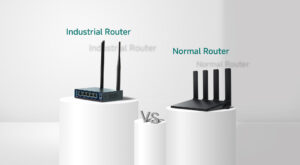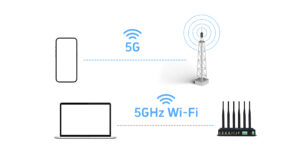When working with serial communication in industrial automation, IoT devices, or embedded systems, one critical setting you’ll encounter is the baud rate. But is a higher baud rate always better? Let’s explore the tradeoffs between speed and reliability in serial communications.
What Is Baud Rate?
Baud rate represents the speed of data transmission in serial communication, measured in bits per second (bps). It determines how many bits can be sent or received each second between devices.
Common baud rates include:
- 9600 bps
- 19200 bps
- 38400 bps
- 57600 bps
- 115200 bps
The Case for Higher Baud Rates
1. Faster Data Transmission
A higher baud rate dramatically reduces transmission time:
- Na 9600 bps, sending text to a serial terminal shows visible character-by-character printing
- Na 115200 bps, the same text appears almost instantly
This speed difference becomes crucial when:
- Microcontrollers need rapid communication
- Large amounts of data must be transferred
- Real-time systems require minimal latency
2. Improved System Performance
For direct microcontroller communication, higher baud rates:
- Reduce program execution time
- Minimize delays in control systems
- Enable faster sensor data processing
The Challenges of High Baud Rates
1. Increased Susceptibility to Interference
Higher speeds are more vulnerable to:
- Zakłócenia elektromagnetyczne (EMI)
- Signal degradation over distance
- Error codes and corrupted data
Transmission distance limitations:
- 9600 bps: ~10-20 meters
- 115200 bps: ~2-3 meters (typically)
2. Hardware Considerations
Standard TTL UART (1.8V/3.3V/5V) has severe distance limitations at high speeds. For industrial applications, consider:
Robust serial protocols:
- RS-232: Better noise immunity than TTL
- RS-485: Differential signaling for long distances
- RS-422: Balanced transmission for noisy environments
These convert UART signals to more robust electrical standards, enabling both higher speeds and longer distances.
Key Factors in Baud Rate Selection
- Matching Rates: Both devices must use identical baud rates
- Odległość komunikacyjna: Higher rates work best for short connections
- Noise Environment: Industrial settings may require lower rates
- Data Volume: High-throughput applications benefit from faster rates
Wniosek
While higher baud rates offer faster communication, they’re not universally “better.” The optimal baud rate balances speed requirements with signal integrity for your specific application. For industrial implementations, consider using RS-485/422 converters when you need both high speed and reliable long-distance communication.
Need help selecting the right serial communication solution for your industrial application? Our team specializes in robust industrial communication devices that maintain signal integrity at various baud rates. [Skontaktuj się z nami] for expert advice.


